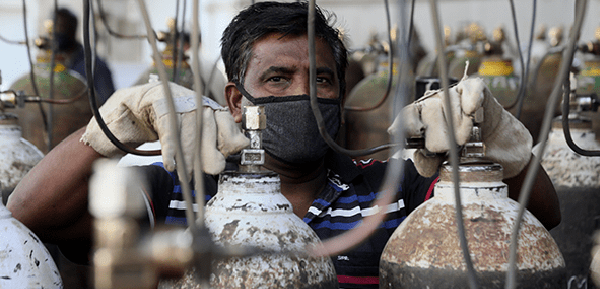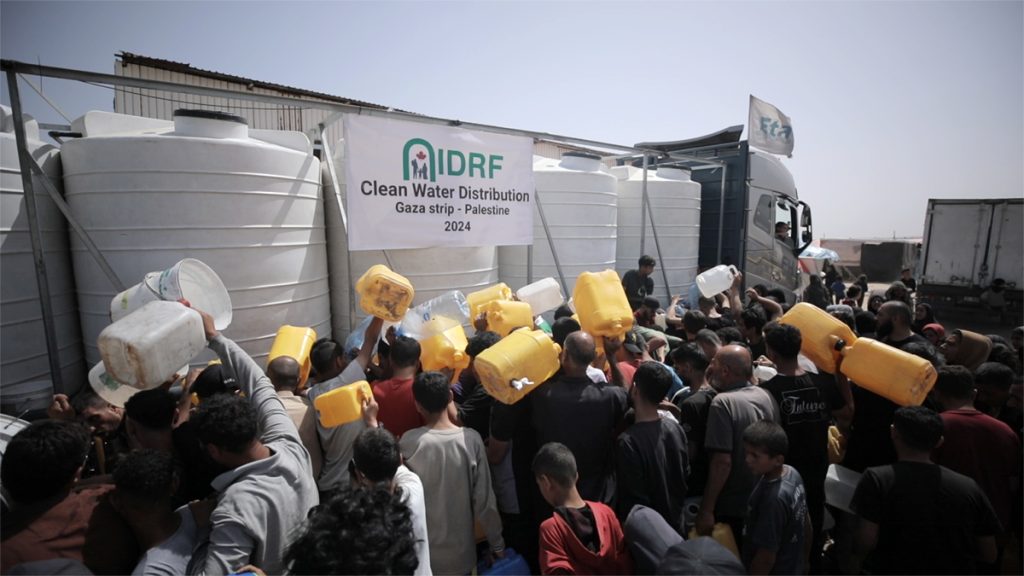India continues to struggle with one of the worst outbreaks of COVID-19 in the world, with more than 27 million people infected and over 300,000 people dead by the beginning of June.
At its peak infection rate in mid-May, India was home to more than half of the world’s daily COVID-19 cases, setting a record-breaking pace of about 400,000 a day. The situation overwhelmed the local healthcare system to the point that hospitals were out of beds, and medication, oxygen, equipment, and other vital resources were in extremely short supply. Without access to a hospital bed and oxygen, some victims were left on the roadside gasping for air and suffocating as they waited for vital care.
In response, IDRF launched an India COVID relief appeal in May, which thanks to generous donors allowed us to begin responding to this urgent need. Working with local charities on a national response, we have been focusing on two core elements of relief that address the most urgent needs of India’s poor and most vulnerable citizens.
The first core element is food distribution.
In India, more than 60% of people are impoverished and survive on less than $3.10 USD a day. The pandemic has pushed an additional 75 million into poverty, and the current wave caused by the more contagious and deadly Delta variant wave is driving that number higher.
In response, IDRF has been working with organizations like Madani Welfare Association to provide food packages that contain essentials like rice, cooking oil, sugar, potatoes, onions, spices, pulses and more. Packaging and distribution are ongoing, with over 450 families have already received these items in Gujarat, West Bengal and Odisha. The packages contain locally sourced items, helping support the economy of the rural communities.
The second core element of our relief is healthcare support.
The healthcare system in India has struggled to cope with rising cases of COVID-19 and the resulting need for medical equipment and medicine. Hospitals have been full and turning away patients, leaving families desperately searching for beds and medicine. Oxygen and ventilation equipment shortages are leaving patients suffocating as they wait for lifesaving treatment.
In response, IDRF has been helping increase the capacity of hospitals and medical centres treating COVID-19 patients in Gujarat, Madhya Pradesh, West Bengal, Jammu and Kashmir, Maharashtra, Uttar Pradesh, and other regions in India. We continue to work with the Madani Welfare Association, the Diocesan Corporation of Jabalpur, Sarvajanik Medical Trust and other local organizations to provide ventilators, and bilevel positive airway pressure (BiPAP) ventilation systems to hospitals. These supports are enhancing the capacity of the hospitals by up to 15%.
We are also providing oxygen tanks and medication to treat patients with COVID-19. In addition, we are making COVID-19 treatment more accessible to poor and vulnerable families by working with the local partners to provide medical subsidies to patients who need them. In addition, we continue to provide medication and food packages to hospitals and families of COVID-19 patients across India. These essential packages are helping patients and their families sustain their basic needs as they fight this devastating virus.
IDRF has also been supporting the wonderful work of UNICEF. We’ve done this by procuring and installing oxygen generation plants in hospitals to treat severe and critical COVID-19 cases, and by providing rapid and accurate COVID testing machines in some of the most affected districts. In addition, we have been supporting essential workers in their struggle to weather the COVID storm, and to prevent further disruption to outreach programs and services for children.
And equally important, we have been supporting UNICEF in their monumental effort to distribute COVID-19 vaccines and administer injections. In fact, for every $85 we provide, UNICEF can train a group of workers in a health facility on administering vaccines and conducting COVID-19 testing.
While the rates of infection and deaths from COVID have eased slightly since their peak in mid-May, the situation in India remains critical and the need is still urgent. IDRF has already made a positive difference in the lives of many needy people in India, and with your continued donations to our urgent appeal for India, we will continue to do more.

